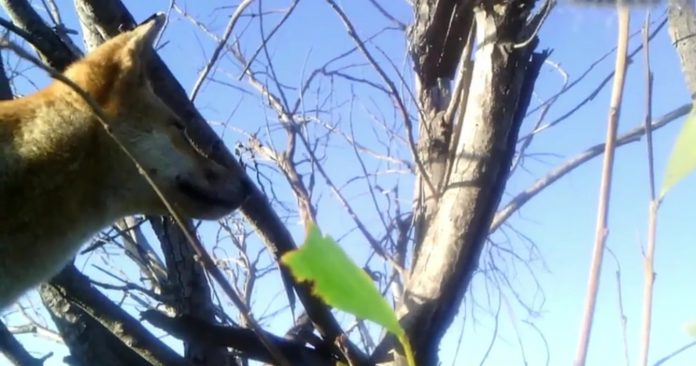World-first footage has uncovered the secret lives of Fraser Island’s famous dingoes and reveals how the resourceful animals find their food.
For the first time, rangers have been able to watch how the wongari (the word for dingoes in the Indigenous language) survive on a mixed diet that includes berries in the bush and fish on the beach.
While dingoes are often on news cameras for the wrong reasons, this footage shows what they get up to when people aren’t looking.
The footage was captured by a camera collar which was fitted onto one of two wongari in May.
The Department of Environment and Science (DES) downloaded the material which had captured 30 seconds of footage every 15 minutes.
Ranger in Charge Linda Behrendorff said the footage provided crucial insight into the movements of wongari around the island known as K’gari in the native Butchulla language.
“We have never seen anything like this before, and it shows that wongari are opportunistic feeders, taking advantage of any food source they find,” she said.
“This is superb footage and shows us where the wongari goes, how and where he finds food and water and gives us an intimate view of the time he spends with his mate.
“For almost a month, the camera collar captured footage of the wongari and tracked him travelling hundreds of kilometres throughout the northern part of the island.
“We can see him and his mate loitering at the Orchid Beach township and being photographed by residents or visitors.
“There’s a scene where he’s eating berries in the bush and fish on the beach and another scene where he’s eating alongside his mate in bushland.
“The vision shows the wongari and his mate high in the dunes and looking down on the beach, running through the bush, around inland water bodies, along the tracks and waking up in the morning together.”
Get more local stories by subscribing to Sunshine Coast News’ free bulletin sent direct to your inbox M-F. Go to Subscribe at the top of this story.
Ms Behrendorff said the Queensland Parks and Wildlife Service (QPWS) fitted two tracking collars to two wongari following several incidents at the Orchid Beach township.
“Tracking collars are one of a number of management techniques we use to monitor wongari after increased risks of negative interactions or incidents with residents or visitors to the island,” she said.
“It’s obvious from the footage that the tracking collar doesn’t cause issues for the wongari, in terms of feeding, moving about the island and interacting with his mate.
“The collar features an inbuilt drop-off mechanism that releases after a set period of time, which allows rangers to track it and retrieve it.
“Since 2011, QPWS have regularly used tracking collars on K’gari regularly to monitor the movements of wongari to help us develop better management programs, including people management.
“The use of tracking collars is approved by an independent Animal Ethics Committee, and they are used around the world to assist wildlife authorities to manage animal/human interactions.
Visitors to K’gari are reminded to be dingo safe at all times:
- Young children must be kept within arm’s reach at all times
- Walk in groups
- Camp in fenced areas where possible
- Do not run. Running or jogging can trigger a negative dingo interaction
- Never feed dingoes
- Never store food or food containers in tents
- Secure all rubbish, fish and bait
- Walk with a stick





